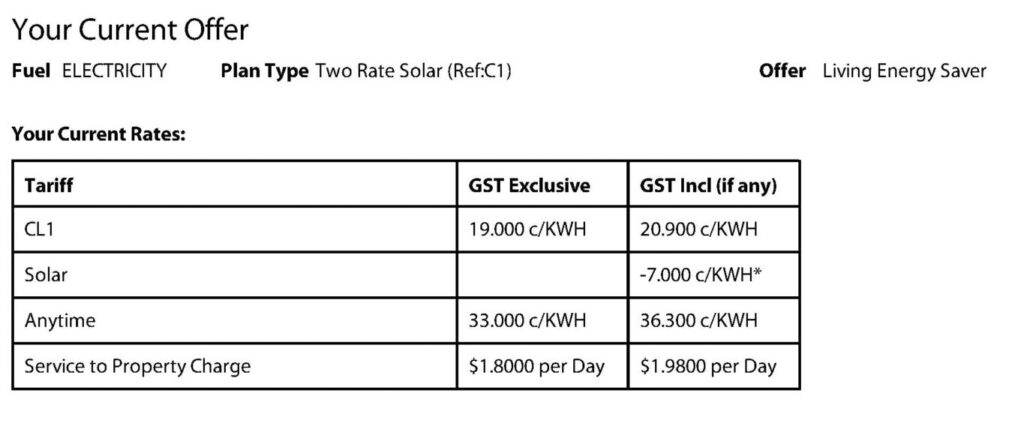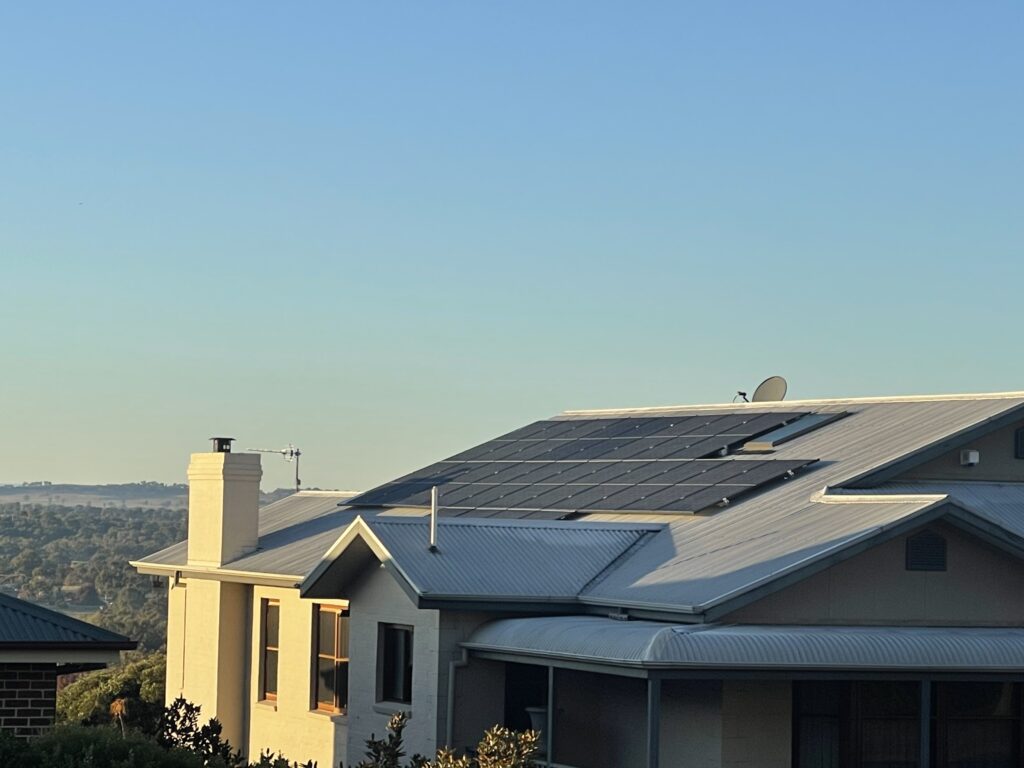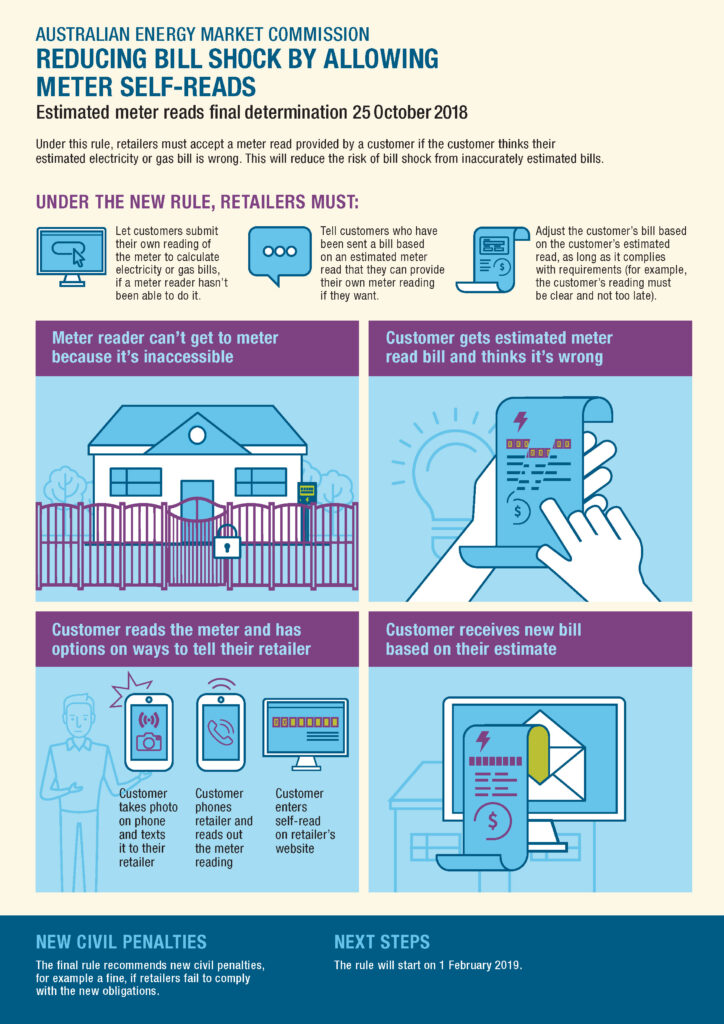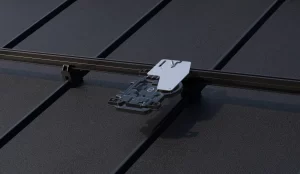Navigating the complexities of electricity bills can be daunting. Especially with the cost of living is on everyone’s mind at the moment, including our families at Transparent Solar. They’d tried calling their provider to negotiate a better deal, but were told they were already getting the best offer. And they’re not alone. Many of us have been there, trying to make sense of the various fees on our bills and wondering if we could be saving more.

Trusting their electricity provider, they looked to other options, including reducing household appliance use and starting a conversation about solar energy systems. Not a bad idea!
However, in the meantime, while a quote and installation could be arranged, we took a look at their bill to see what we could do. Instantly we knew that the deal they were on could be beaten by competing providers, so we jumped online to investigate which plan and provider could save them the most money.
We passed on our knowledge on how to read their electricity billand where they could save, much to their relief!
This made us realise that many people have the desire to manage their electricity bills better, but easily become overwhelmed with the many different fees and charges on their bill. After all, who has the time in their busy day to become an expert on this!?
In this blog we will aim to simplify your bills and understand these charges, the jargon associated, and how this information can empower YOU to accurately compare prices from different retailers and adjust consumption habits to save on your bill even before your solar PV system begins to produce electricity.
Overview of Typical Bill Charges and Layout


A typical electricity bill will have the first page dedicated to showing the total charge, due date and a comparison of your bill to the average household use across the country or state, or a comparison of your own usage compared to previous bills.

You can see next to each reading an E (estimated) and A (actual).
The second page will show your previous meter read alongside your current read. The previous total will be subtracted from the current total to show the usage for the current billing period. Your home may have multiple meters, a controlled load meter, or time of use metering, each of which will be shown on your bill in a slightly different way. Your usage total may also come from an Actual meter read or an Estimated read*.
*The implementation of Smart Meters has generally meant that Estimated reads are no longer necessary due to the ability to remotely read the usage.

Further down, the individual charges will be listed. This will generally be listed as cents per Kilowatt Hour (kWh) for your usage or solar feed-in or cents per day for your supply or access charge. (We will delve into what a kWh actually is a bit later).
Below you can see more examples of where your data will be on your bill.


What is a kW and kWh?
A Kilowatt Hour or kWh is the standard measure of electricity usage. Each electricity appliance uses a certain amount of watts. For example, if you have a 100w lightbulb left on for ten hours, the lightbulb will have used 1 kWh of electricity (or 1000 watts, over the duration of an hour). This video is a great resource to better understand the difference between a kW and a kWh.
If you want to take control of your electricity usage, learning the wattage of each of your appliances and what your typical daily usage is can help you effectively cut down and utilise your solar production to its maximum potential in saving you money.
Read this blog here on how you can learn each wattage of your appliances.
What is Controlled Load?
Controlled load may appear as “CL” or “CL1” on your bill, and you may have a Controlled Load access fee in addition to your general supply access fee. The advantage of the controlled load is that you will typically be paying a lot less per kWh for electricity for the specific appliances wired to this meter, making them less expensive to run.
A “Controlled Load” meter and the controlled load usage on your electricity bill is a way of metering high-usage items, most commonly electric hot water systems, but in some instances for underfloor heating, pool pumps etc.
Below, you’ll see in the graphic a break down of each line item provided by the energy retailer. We’ll delve further into what each means in the rest of the blog.

The Control load, in this case, is much cheaper than the Anytime use tariff.
Access fees can vary between retailers and you could save by comparing.
Anytime or time-of-use tariffs will appear here.
If you have a time of use plan, you may see charges for:
- Peak
- Off-peak
- Shoulder Usage
Known as a Feed-in Tariff. With a solar installation,
this is where you will see the amount you will be
credited per kWh exported to the grid. Overall,
this reduces your bill.
Why Do Energy Companies Charge an Access Fee/Supply Charge?
An Access Fee or Supply Charge (different retailers have different names for this) is a charge that the electricity retailers pass on from the network maintainer to the consumer. For most of country NSW, the network maintainer is Essential Energy.
The network maintainer uses these fees to upkeep the infrastructure of the network – power lines, transformers, generators etc. There can be some variation in the supply charge between different retailers and different plans, so it pays off to be attentive when comparing plans, and ensuring that savings you make on your usage are not eaten up by a larger supply charge.
Why Does My Electricity Provider Sometimes do an Estimated Read?
An estimated read is usually received if a company’s meter reader has not had clear access to your meter. Sometimes this is due to pets being in the yard, a customer placing a lock on their meter box, or, in the case of some farms and properties, difficulty traversing the paddocks to access the meter box (if it isn’t located at the home).
Estimated reads are gradually becoming less common as smart meters are utilised in more homes, as these can be read remotely. In the case of many controlled load meters or other older electricity meters, they may still occur occasionally.
Most electricity retailers have the option of uploading or emailing a photo of your meter if the actual read is much lower than the estimated read. If you receive a bill that is far more expensive than you expected, checking the meter read to ensure it was not an estimated read is a good first step. You can then take a photo of your meter to compare the actual read with the estimated, and if there is a discrepancy, contact your retailer for further advice.
Now this is all before you have installed a solar PV system. You can use these tips to see if you are really getting the best deal from your retailer or if it’s time to move to a more competitive price.
Once you’ve installed your new solar PV system, you’ll start seeing some more information on your electricity bill.
How to read my electricity bill with solar installed?
What is a Feed-in Tariff?
The feed-in tariff is the credit you receive for each kWh of electricity you export into the grid from your excess solar production. The Independent Pricing and Regulatory Tribunal (IPART) are responsible for setting a guideline rate for retailers, though individual retailers are able to set their own prices.
It is important when considering your power bill that you don’t just look at the cost of buying electricity compared to the credit for selling your electricity, but to consider your personal circumstances.
For example, if you have a very large solar PV system that generates a surplus of electricity, it may be worth buying back electricity at a higher rate than other plans. However, if you have a smaller system that does not export as much, forgoing a higher feed-in tariff for the benefit of a lower rate of buying electricity from the grid may be more beneficial in reducing your overall electricity bill.
If you have an Enphase system, your Enlighten data can help you decide what type of plan will benefit you most. When we install Enphases systems, we’ll show you how to read this data.
Anytime vs Time-of-Use Plans
Anytime plans are a flat charge per kWh imported from the grid, no matter what time of day. Time-of-Use plans may vary, but in general they have a different charge for peak, off-peak and shoulder usage.
The electricity company will set the times that each price is valid.
The advantage of these plans is that you can plan your usage to fall within the off-peak window by running your dishwasher or pool pump during this window, and being charged less for the electricity these appliances use compared to what they would cost in the peak time period.
Some retailers only offer time-of-use plans at certain addresses, but it is worth exploring if you consider adjustments in usage habits a worthwhile trade off for the potential savings.
Understanding Time-of-Use Plans
Canstar Blue has a great article that summarises and you can also compare energy retailers. In summary, Time-of-Use plans are something you will sign up at your discretion. Each tarriff is defined as:
- Peak Hours: Times when electricity demand is highest.
- Off-Peak Hours: Periods when electricity demand is lower.
- Shoulder Times: Intervals between peak and off-peak hours.
Customers can leverage peak, off-peak, and shoulder electricity tariffs for cheaper bills by:
- Shifting Usage: Using more electricity during off-peak and shoulder times when rates are lower.
- Reducing Peak Consumption: Minimising electricity use during peak hours to avoid higher charges.
- Planning Major Usage: Scheduling energy-intensive activities like laundry or dishwashing during off-peak or shoulder periods.
- Energy Efficiency: Implementing energy-efficient practices to lower overall consumption, particularly during peak hours.
Now that I understand the charges on my bill, how do I use this information to save money?
Understanding the different charges and how they fit with your individual usage habits is the key to effectively comparing electricity plans. In summary:
- Understanding electricity bills is important due to rising living costs.
- Households could find better deals with competing electricity providers.
- Understand what you are being charged for on your bill and when you are being charged.
- Knowledge of kWh usage with your assigned plan, what type of plan you are on, and how you have been charged as estimated or actual reads.
- Smart meters are making estimated reads less common.
- Choosing the right electricity plan depends on your personal circumstances.
- Installing solar PV systems can result in significant savings by exporting unused kWh back to the grid
- The size of the solar system will determine how many kWh you will generate and if that results in a surplus.

You are now empowered to view the different rates offered by competing retailers, and know that a plan with a lower charge per kWh is not going to be effective at reducing your bill, if the access charge is more expensive than other retailers. Likewise, a larger feed-in-tariff will not be effective at saving you money if you are buying back electricity from the grid at an inflated price.
So its extremely important that if you choose to go solar, you are getting the best energy deal you can!
For a marketing-free comparison, go to the Energy Made Easy website for a questionnaire that will walk you through what options are out there for you. Supplied by the Australian Government, it’s aim is to make sure you are getting the best deal.
Now if you want to not only save on your bill but also aim for a net-zero or even a complete energy credit, you can talk to us for a solar solution. With our solar solutions you could save a lot of money per year on your electricity bill.
Save with Solar from Transparent Solar Solutions
An Enphase solar PV system is the premier system that can save you money by being the most efficient and high quality product available, and can also save you further money by providing the Enlighten data to give you more confidence in choosing your electricity rates.
Choose Transparent Solar Solutions as your trusted, platinum Enphase installer when you decide it’s time to get something back from electrical retailers!





